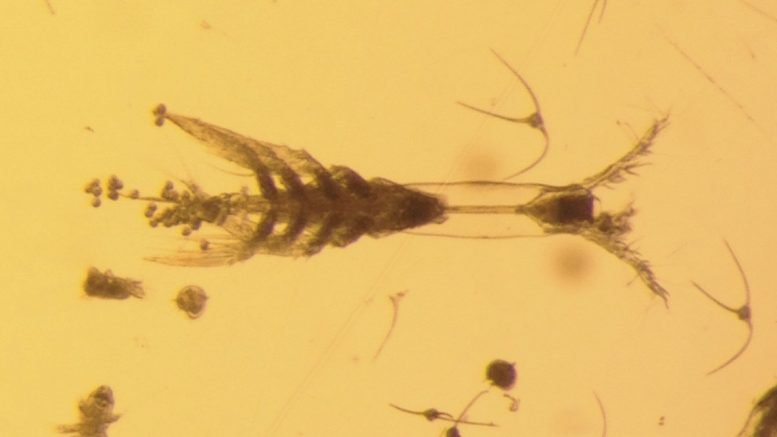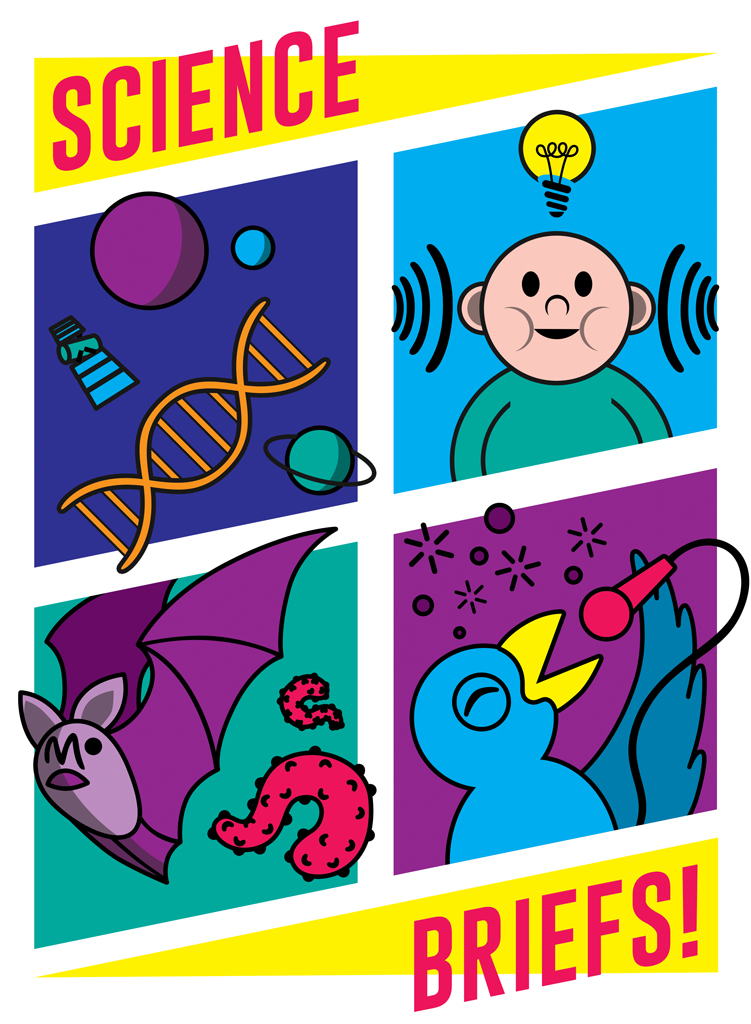A U of M graduate student has made a shocking discovery while in Nunavut: Canada’s very first monster.
The monster, named Monstrillopsis planifrons, was discovered by Aurélie Delaforge – who received her Master’s degree in oceanography from the Université Pierre et Marie Curie in France, and is currently a PhD candidate at the University of Manitoba – while studying at the Centre for Earth Observation Sciences (CEOS). Her work at CEOS is supervised by associate professor C.J. Mundy.
While there are around 160 species from the Monstrillopsis family in the world, this is the very first of its species ever found in Canada.
“This is pretty much as good as it gets when doing taxonomy,” Delaforge said.
The monster is a one-eyed, two mm-long adult female monstrilloid copepod. While it looks like a particularly frightening insect, it is in fact a minuscule crustacean. It has a transparent body and a flat forehead. It is a marine zooplankton, and was collected with other, less rare plankton.
The discovery was actually a coincidence. Delaforge was living on an ice camp in Cambridge Bay where she was working on her PhD thesis – which she describes as “the study of the onset of under-ice arctic phytoplankton blooms” – when she encountered the creature in an ocean sample.
Because it continued to appear further samples, Delaforge began to realize this copepod was local to the Canadian Arctic, saying that “the first time I saw the species, I texted my colleague Dr. Wojciech Walkusz, saying I had this alien looking copepod in my samples, and he replied saying that it was part of the Monstrilloida family.”
“Knowing that this could potentially be a new species, we got in contact with a colleague in Mexico, Dr. Eduardo Suárez-Morales, who is an expert in this group. After dissecting the specimen, he confirmed that the specimen was a new species.”
Monstrillopsis only takes on an adult form for about two months, and are virtually invisible as larvae. Delaforge noted that situations like these are what makes the study of plankton and other minute ocean life so interesting.
“The best part about studying taxonomy, especially in the case of phytoplankton and zooplankton, is that you get to see what the human eye cannot easily see. The microscope or loupe allows you to see all of the different shapes of the organisms that are present in all aquatic, fresh or marine, environments,” she said.
“A funny thing I like to say to students – you know when doing this that when you go swimming in areas such as Winnipeg Lake that the water is not just water, they are thousands of tiny organisms surrounding you, therefore you try and avoid getting any water in your mouth.”
While the zooplankton was found in 2014, the study, A new species of Monstrillopsis (Crustacea, Copepoda, Monstrilloida) from the lower Northwest Passage of the Canadian Arctic, was published in the Oct. 18 issue of ZooKeys journal.
Because the creature was found in the June, the discovery even offers some insight into its life cycle.
“Knowing that [Monstrillopsis] is only in the water column as larval and adult stages, we now know due to our observations that the adult stages of [Monstrillopsis] appear in May and June in Dease Strait, meaning this is the time of the year that they reproduce, as this organism can not feed itself,” Delaforge explained.
While Delaforge’s plans to continue working on her PhD, she said she believes the discovery may inspire further research into Monstrilloida composition within the Arctic Ocean. The published study notes that because there are large stretches of regions that remain under-sampled for monstrilloid copepods, further research should result in more local and regional lists.
The specimen is now kept in the Collection of Zooplankton at El Colegio de la Frontera Sur (ECOSUR), in Chetumal, Mexico.
While its appearance coinciding with the Halloween season is purely coincidental, if you were considering dressing up as Monstrillopsis planifrons for Halloween, Delaforge has the costume all figured out.
“I will personally try this – I would say one would have to make sure that they have the antennas, the flat forehand, a transparent upper body with ornamentation, papilla-like, over the whole upper body, and eight legs.”
For an extra touch, consider mounting yourself on a slide and covering yourself in acrylic nail varnish.





